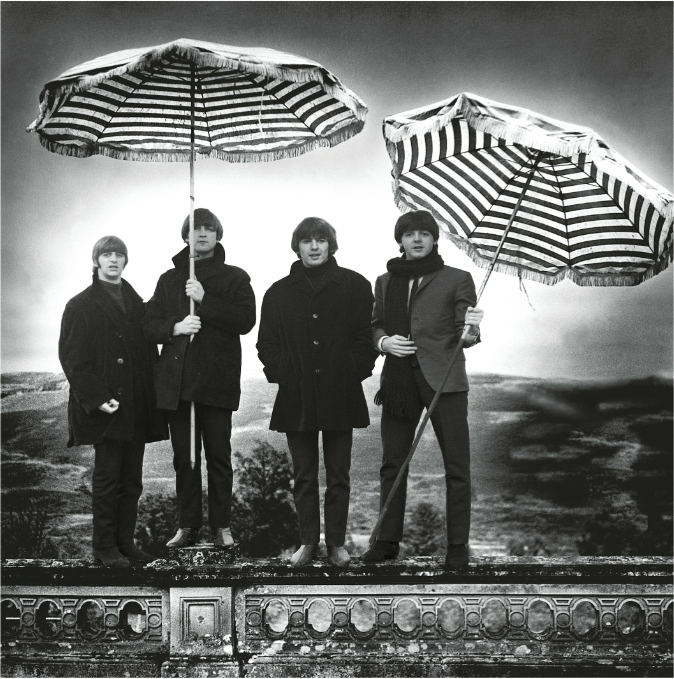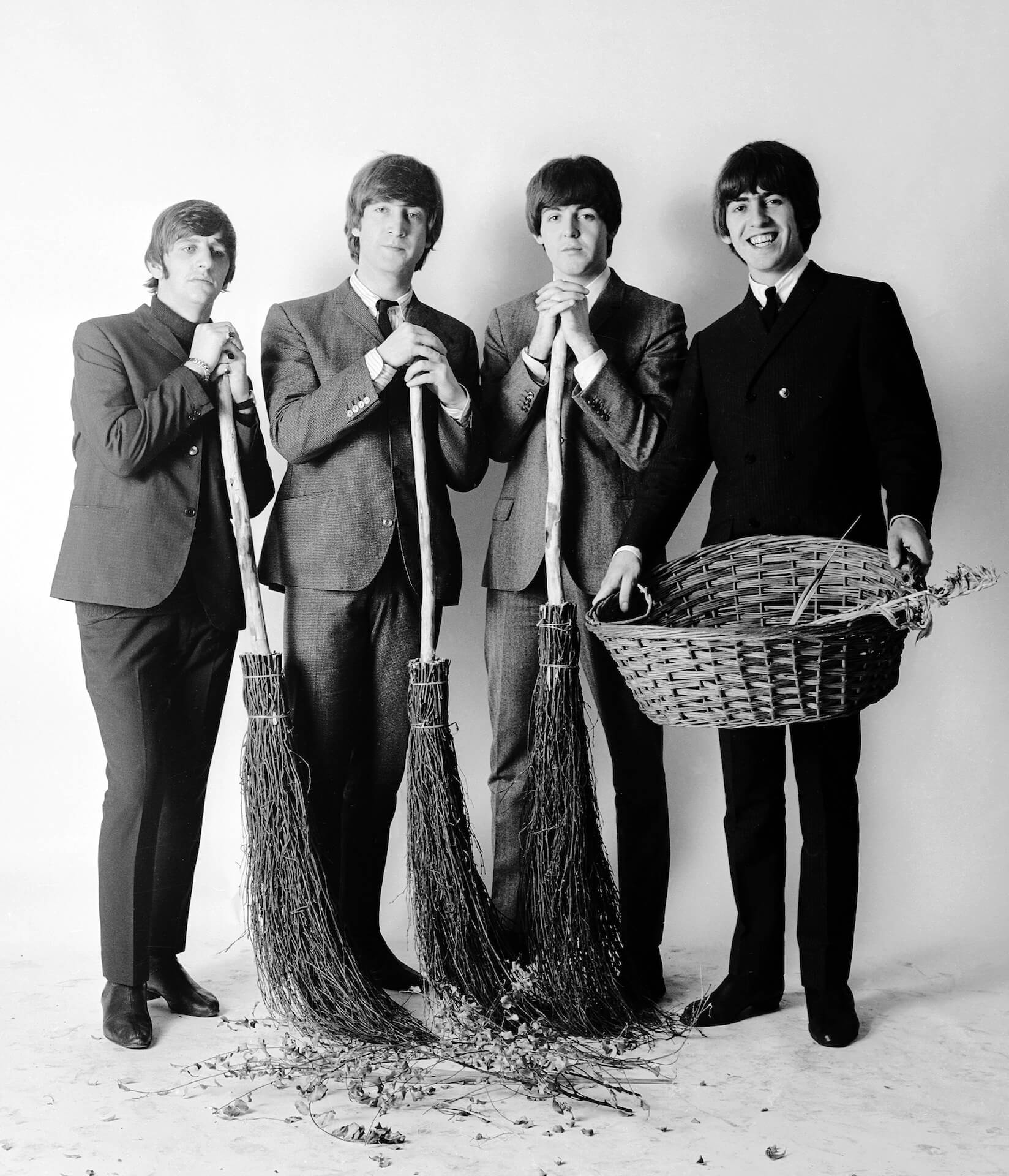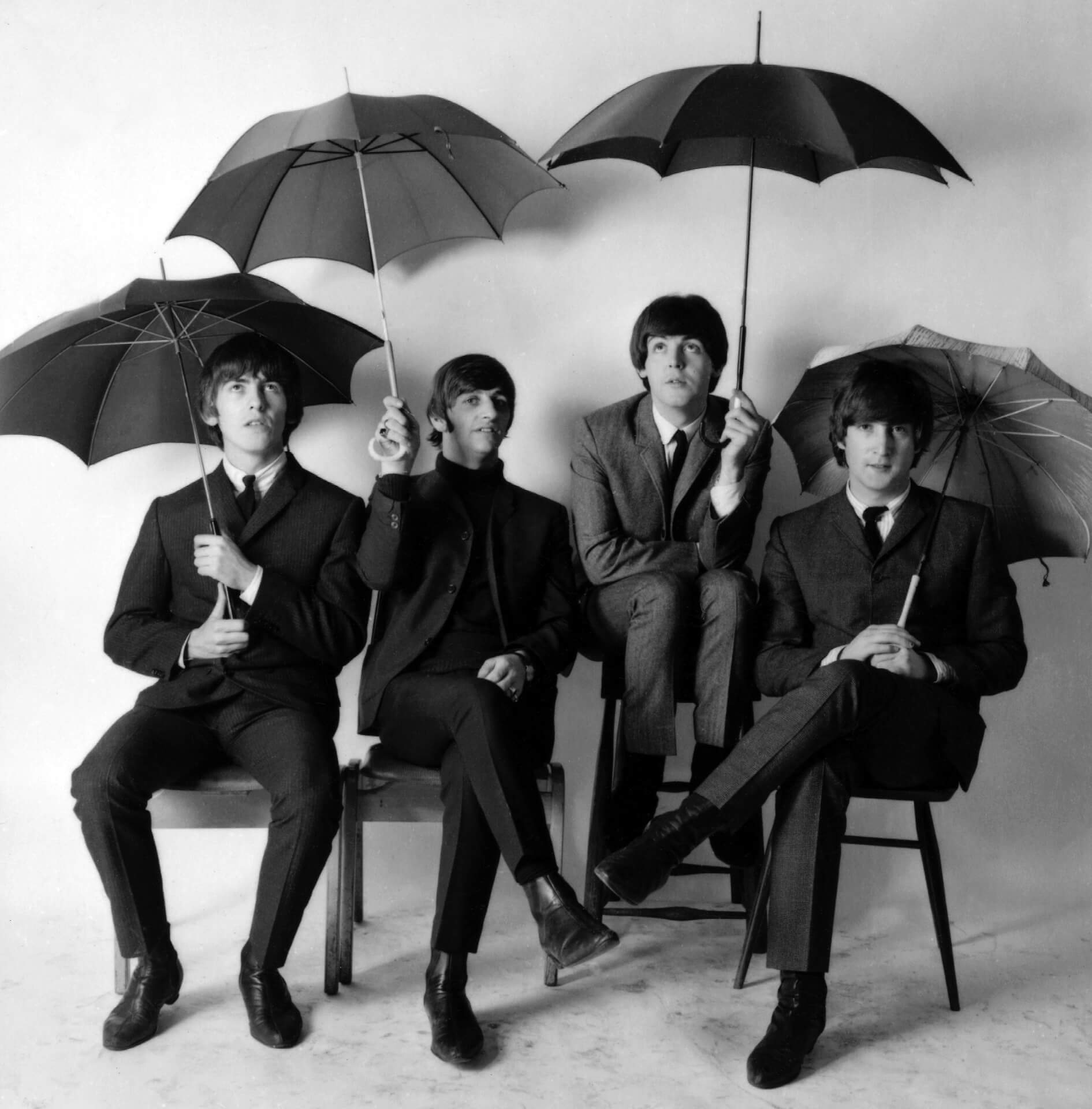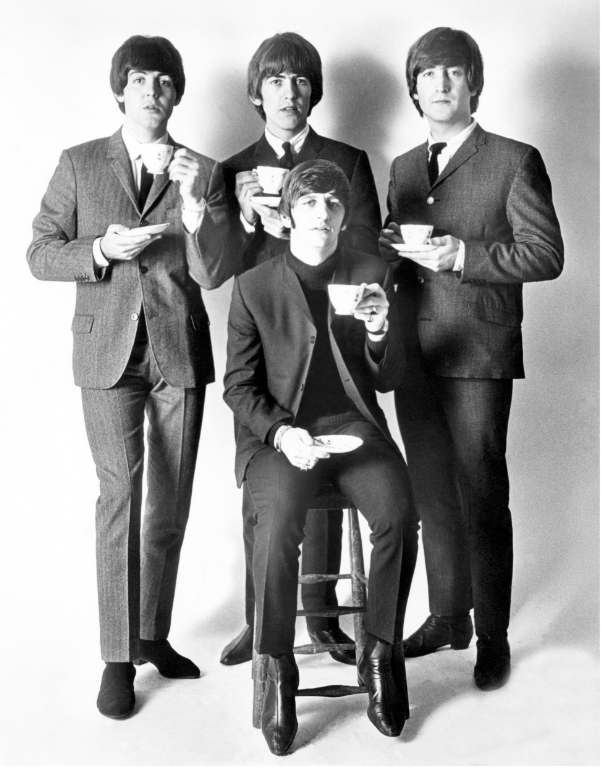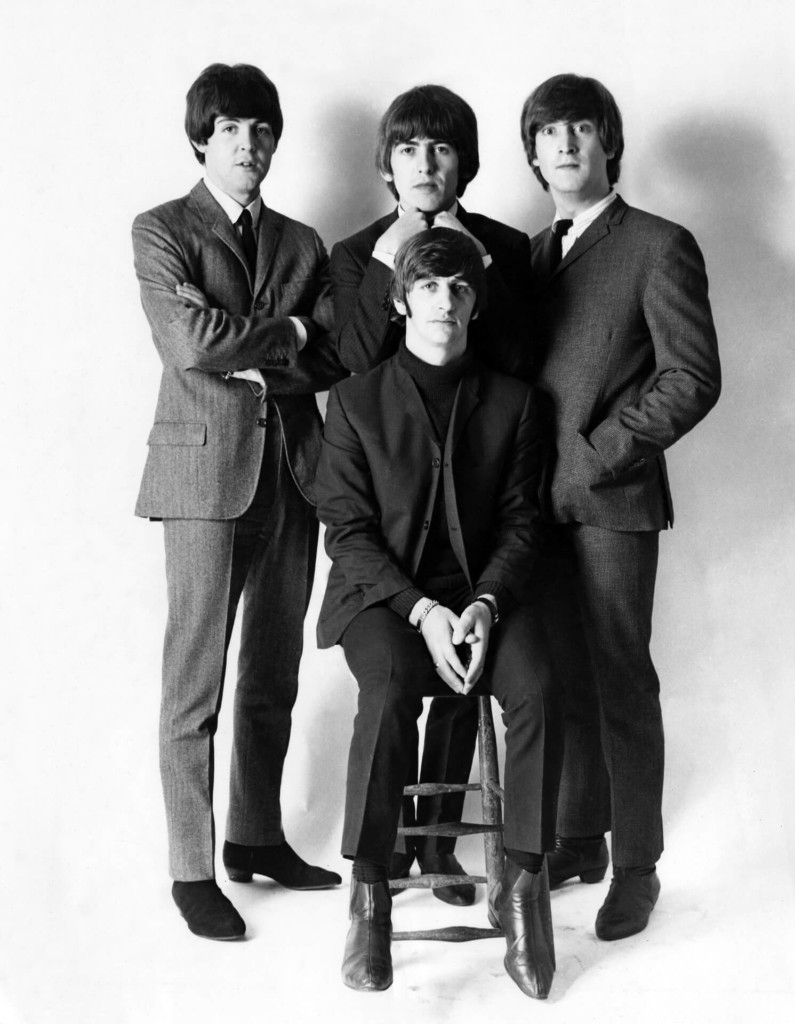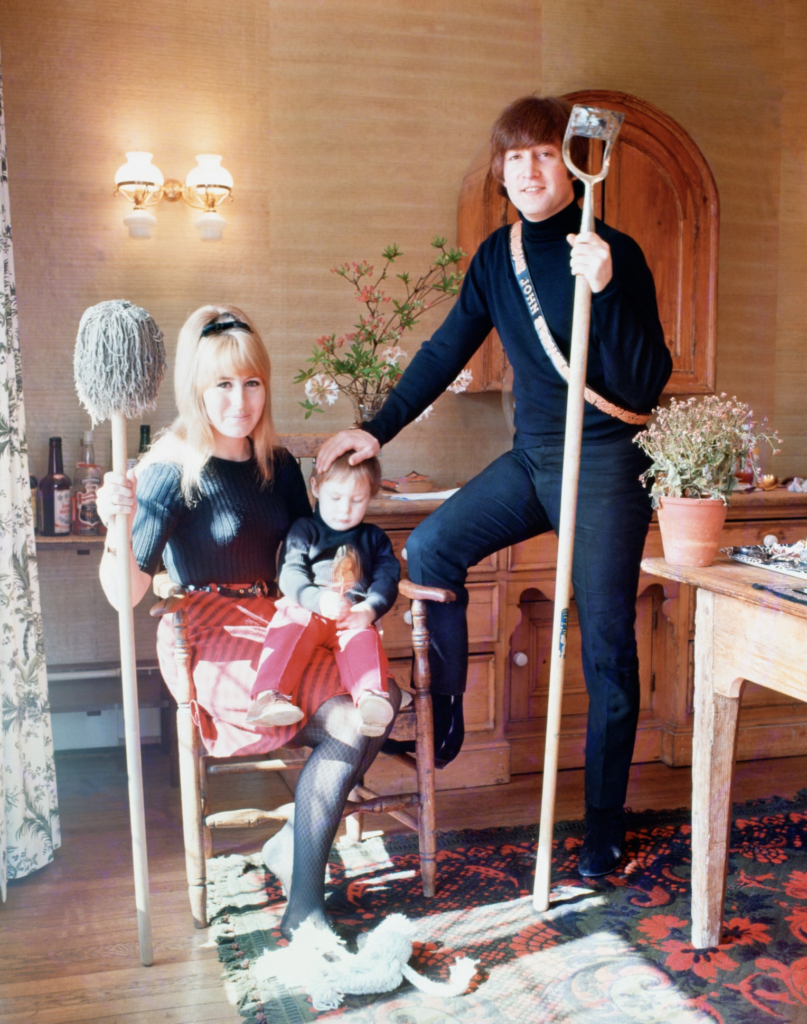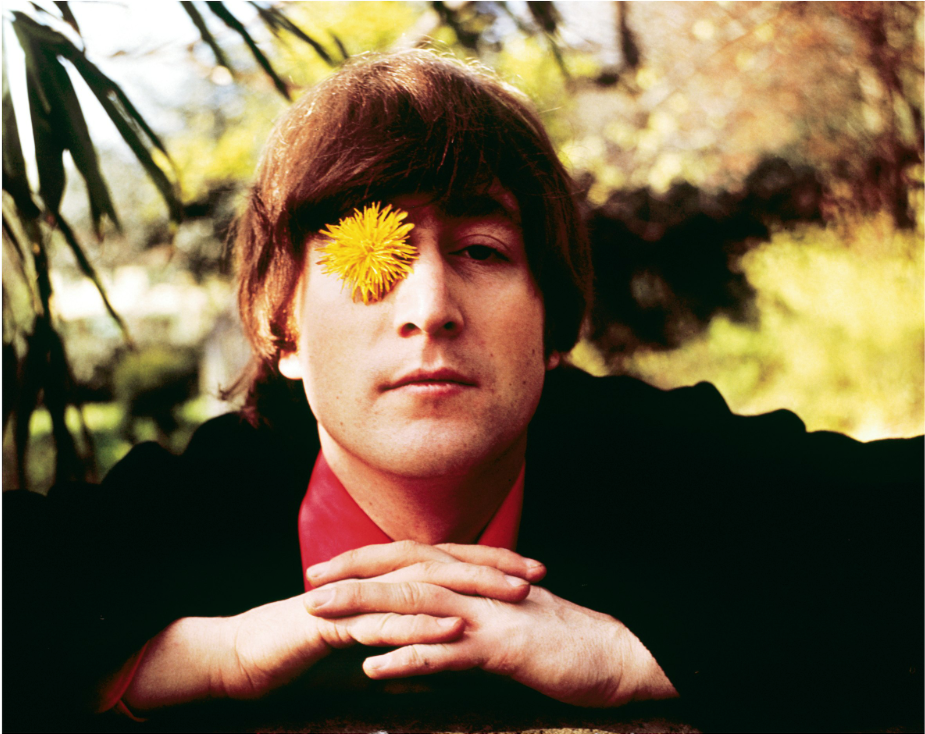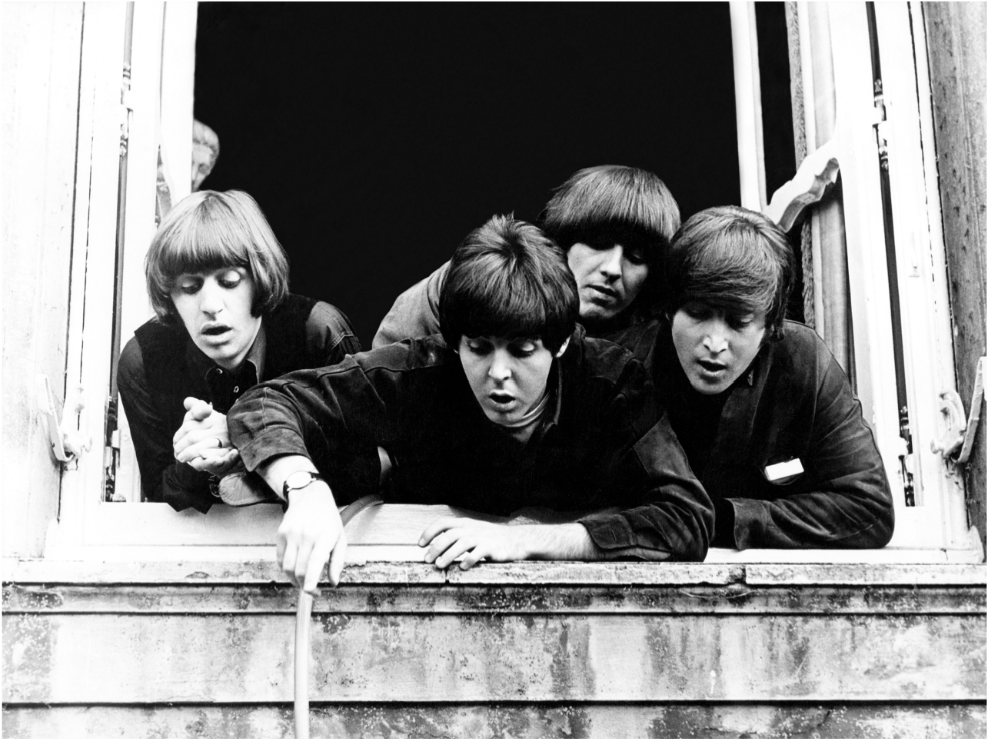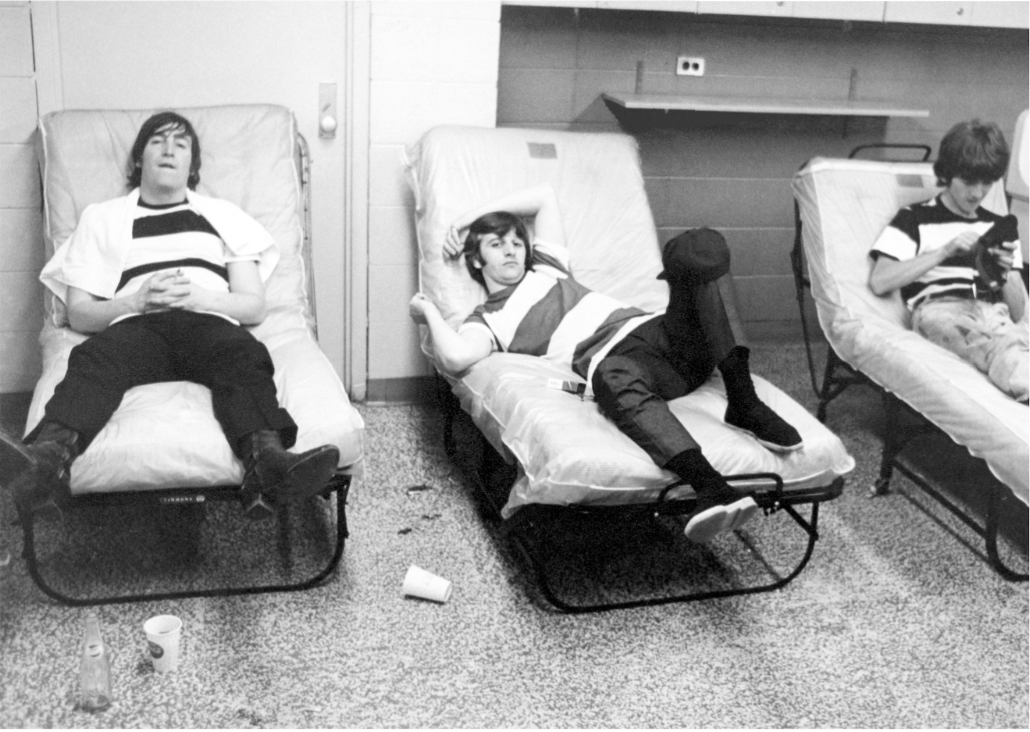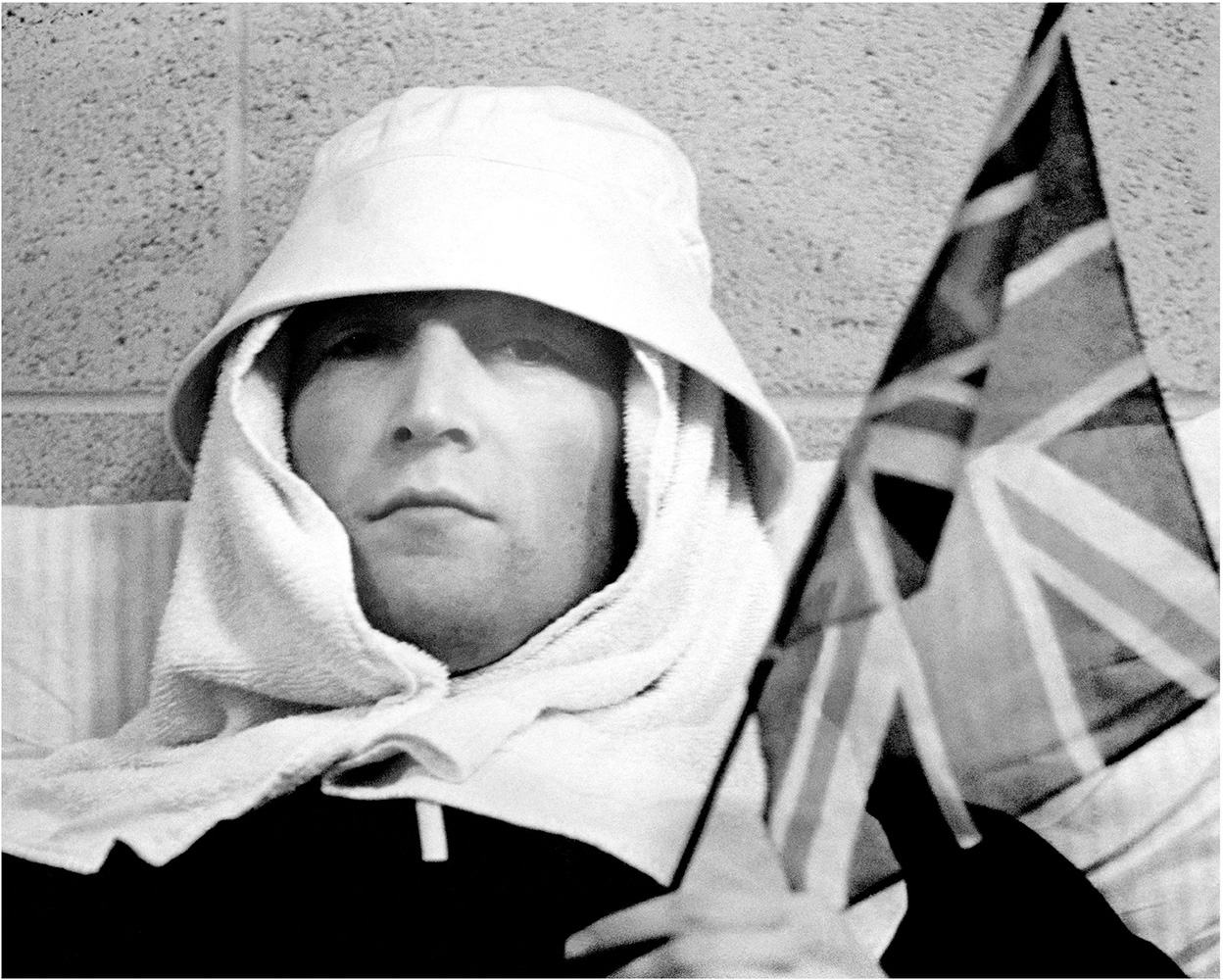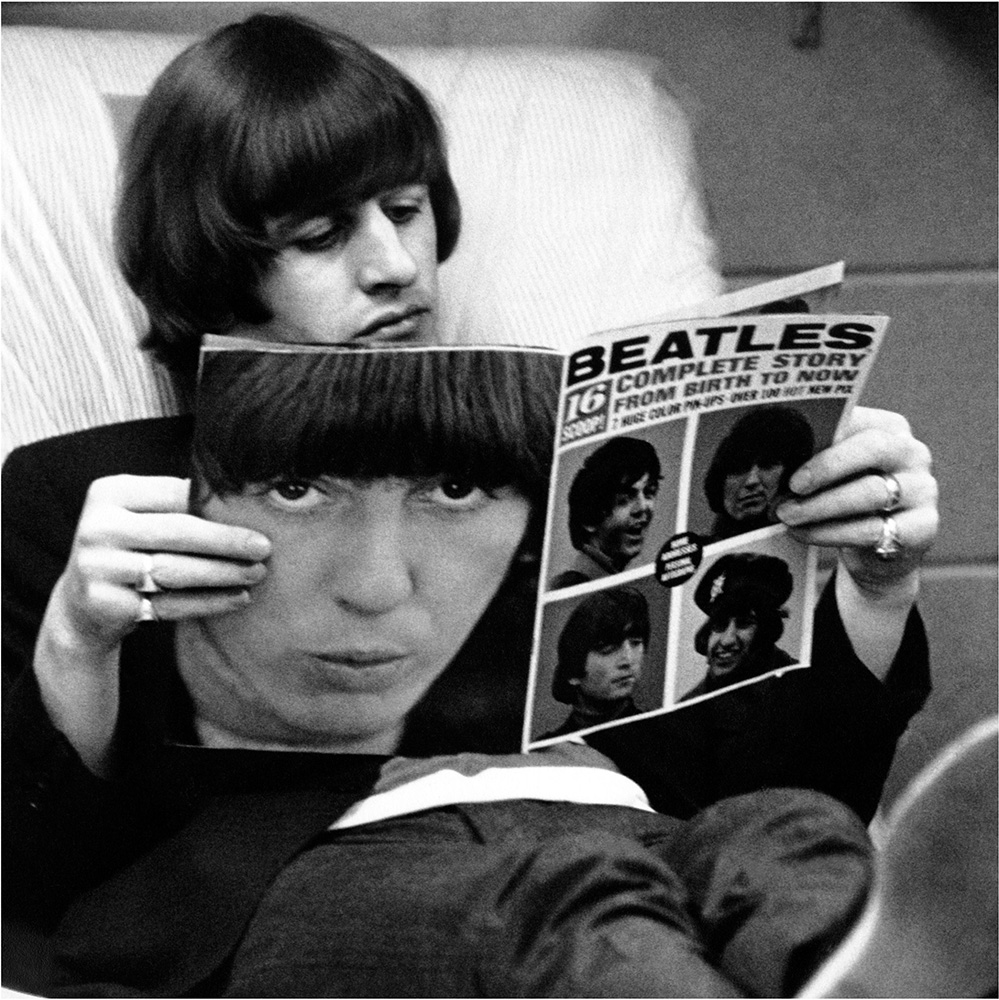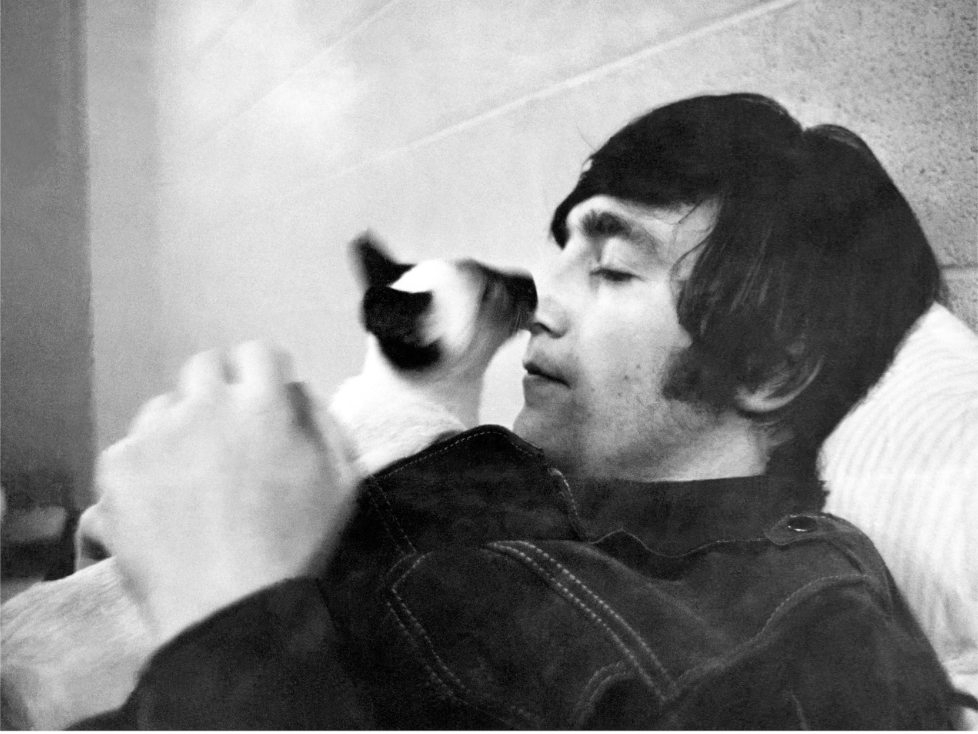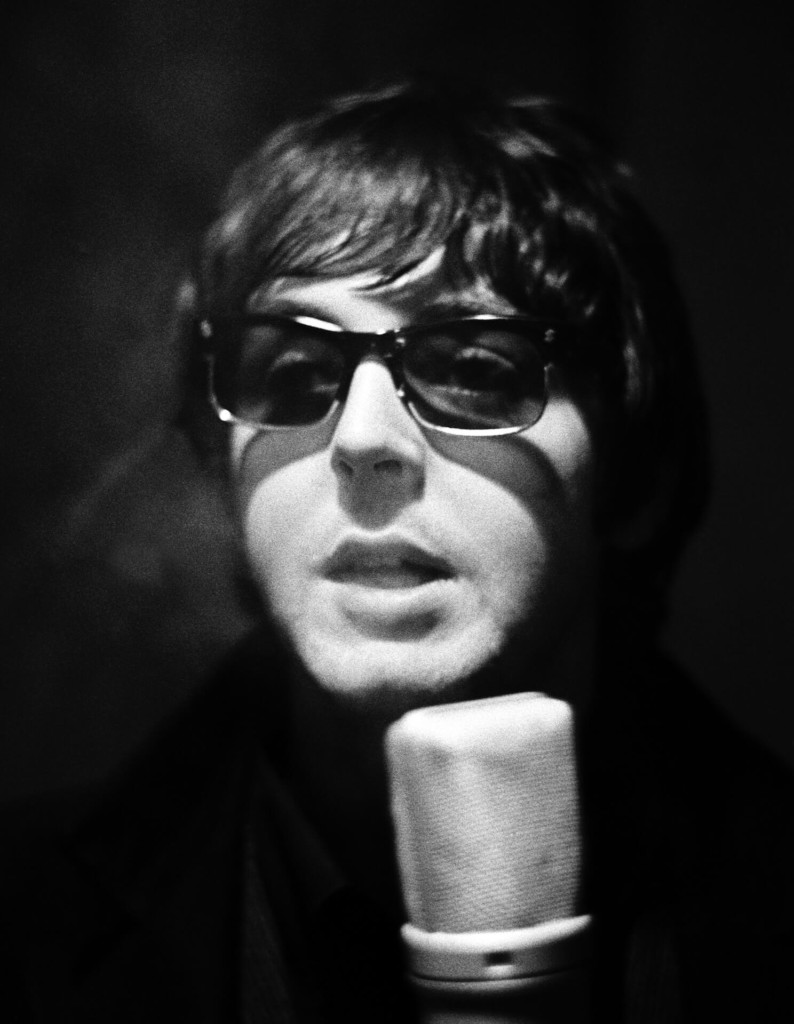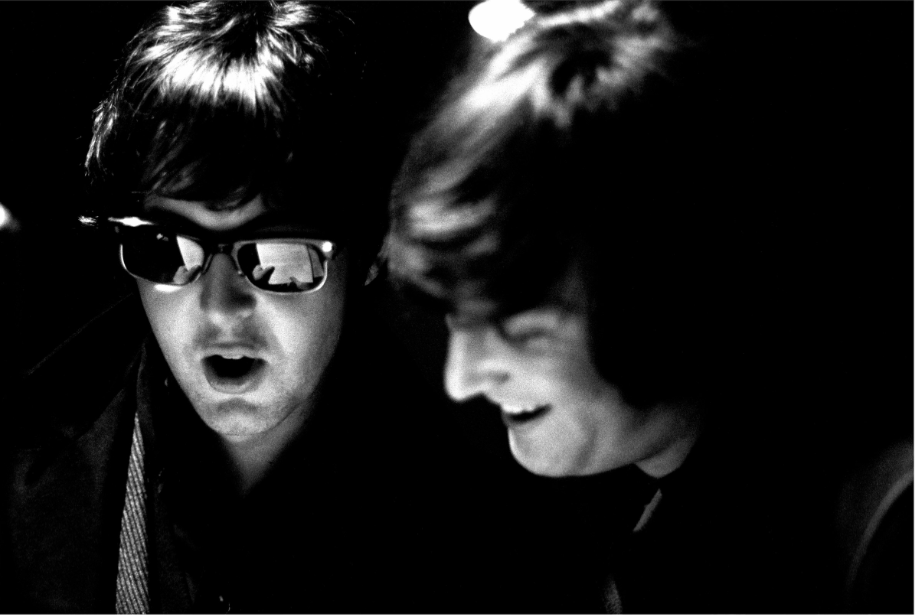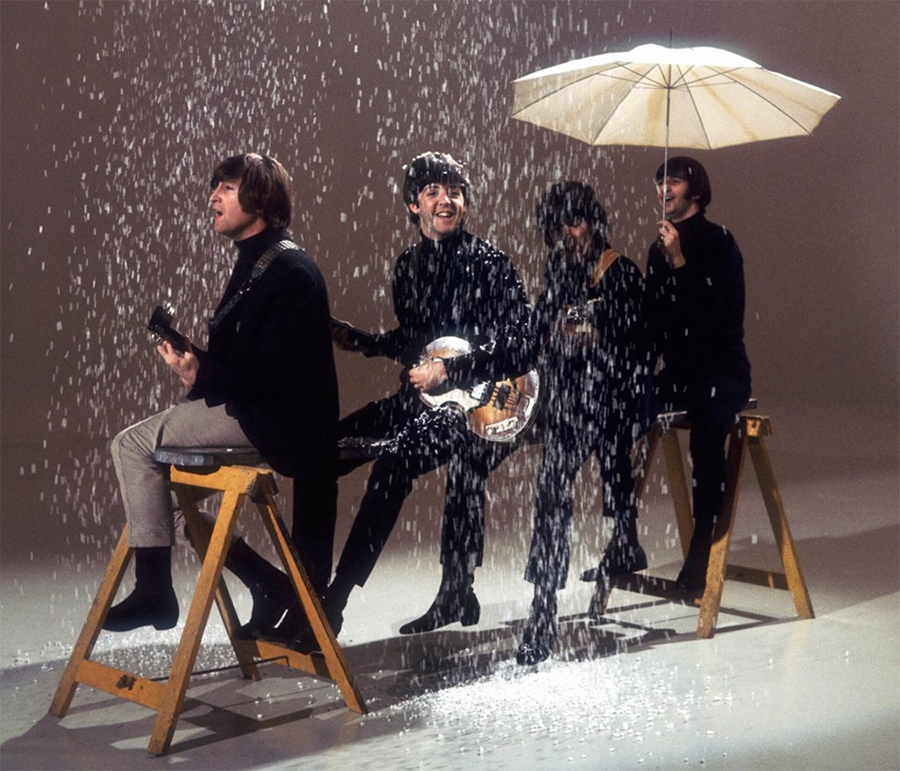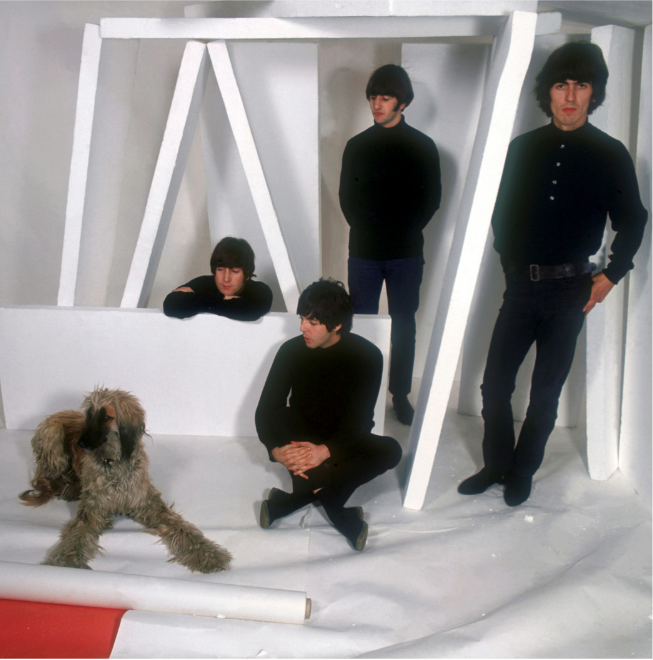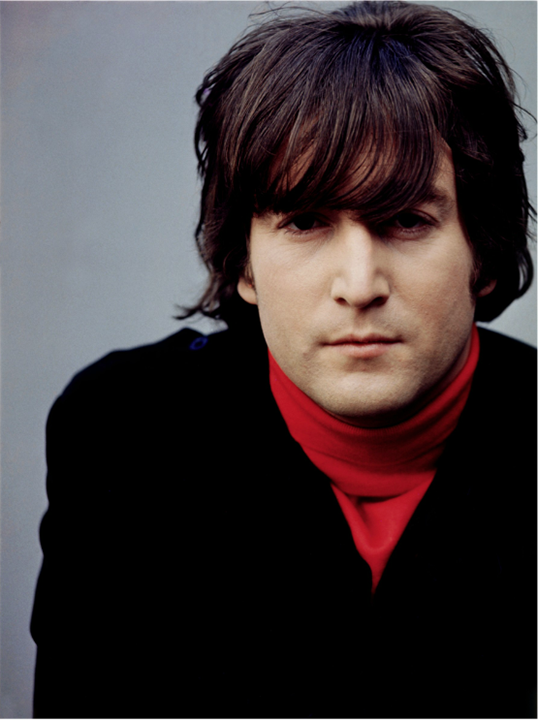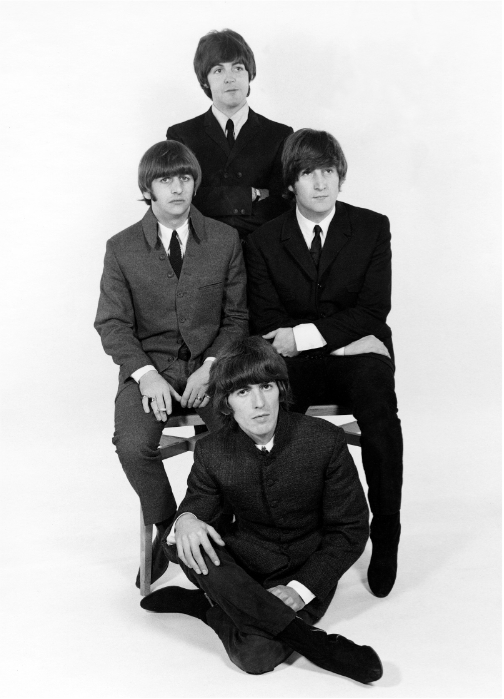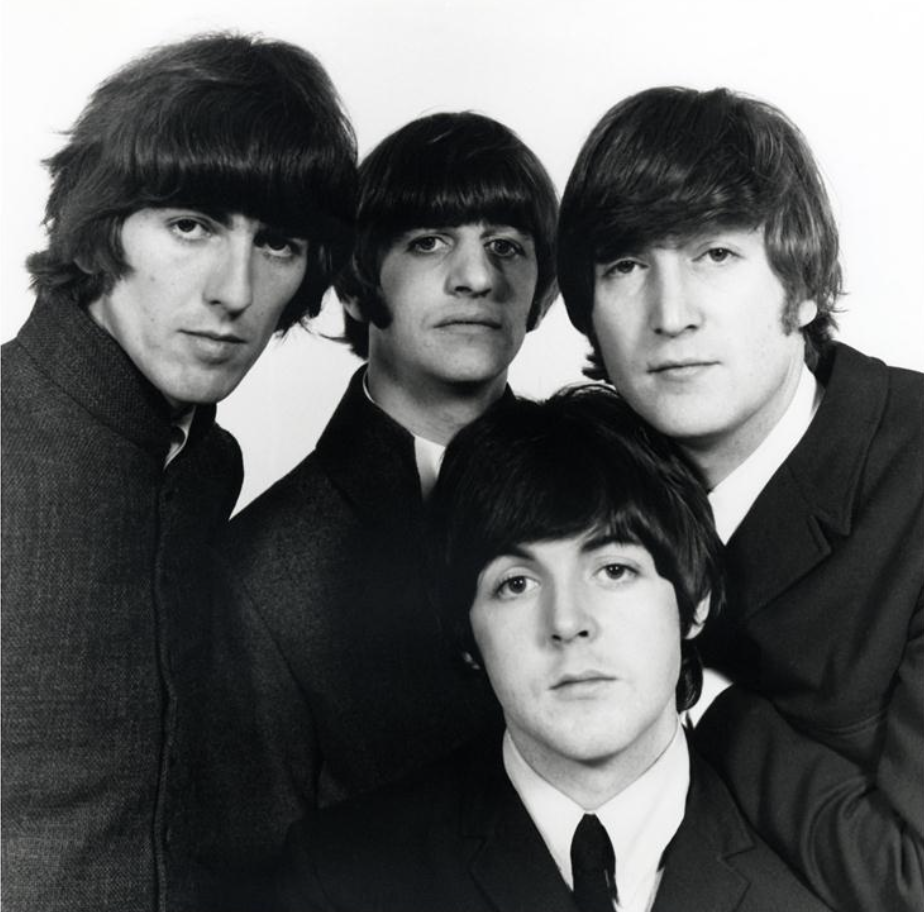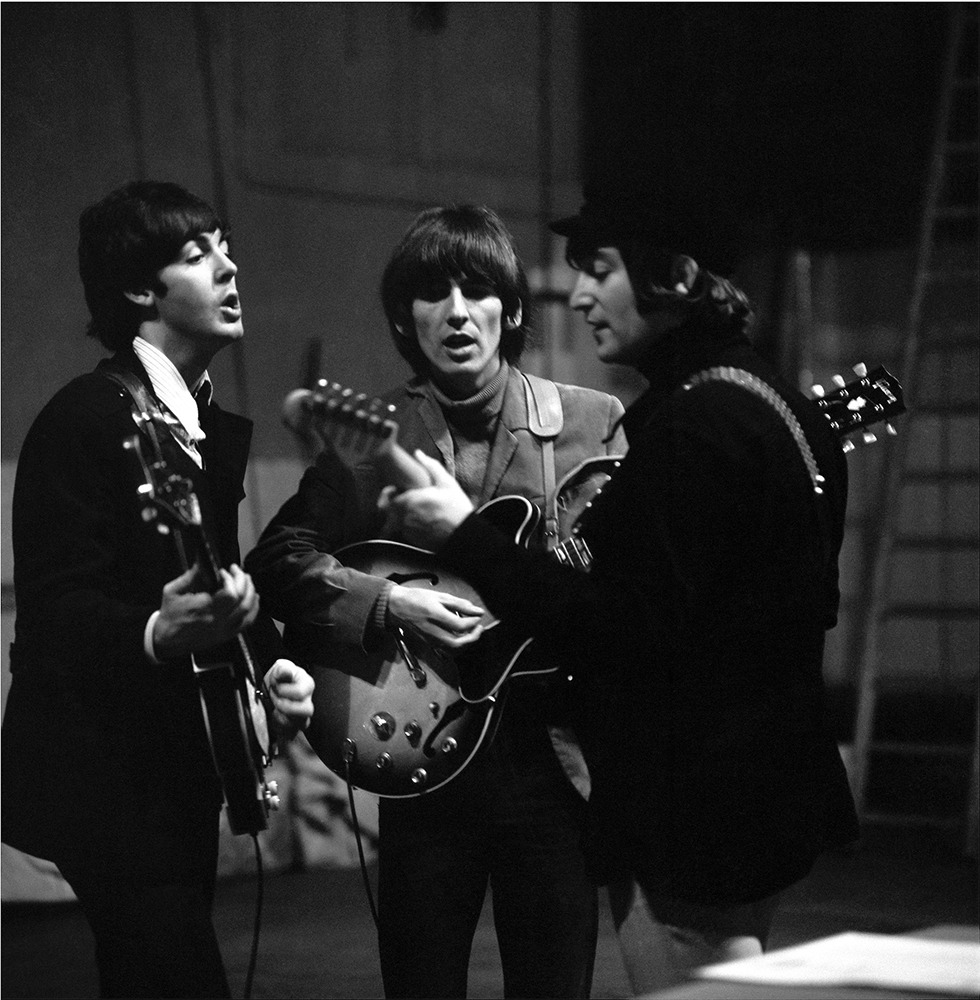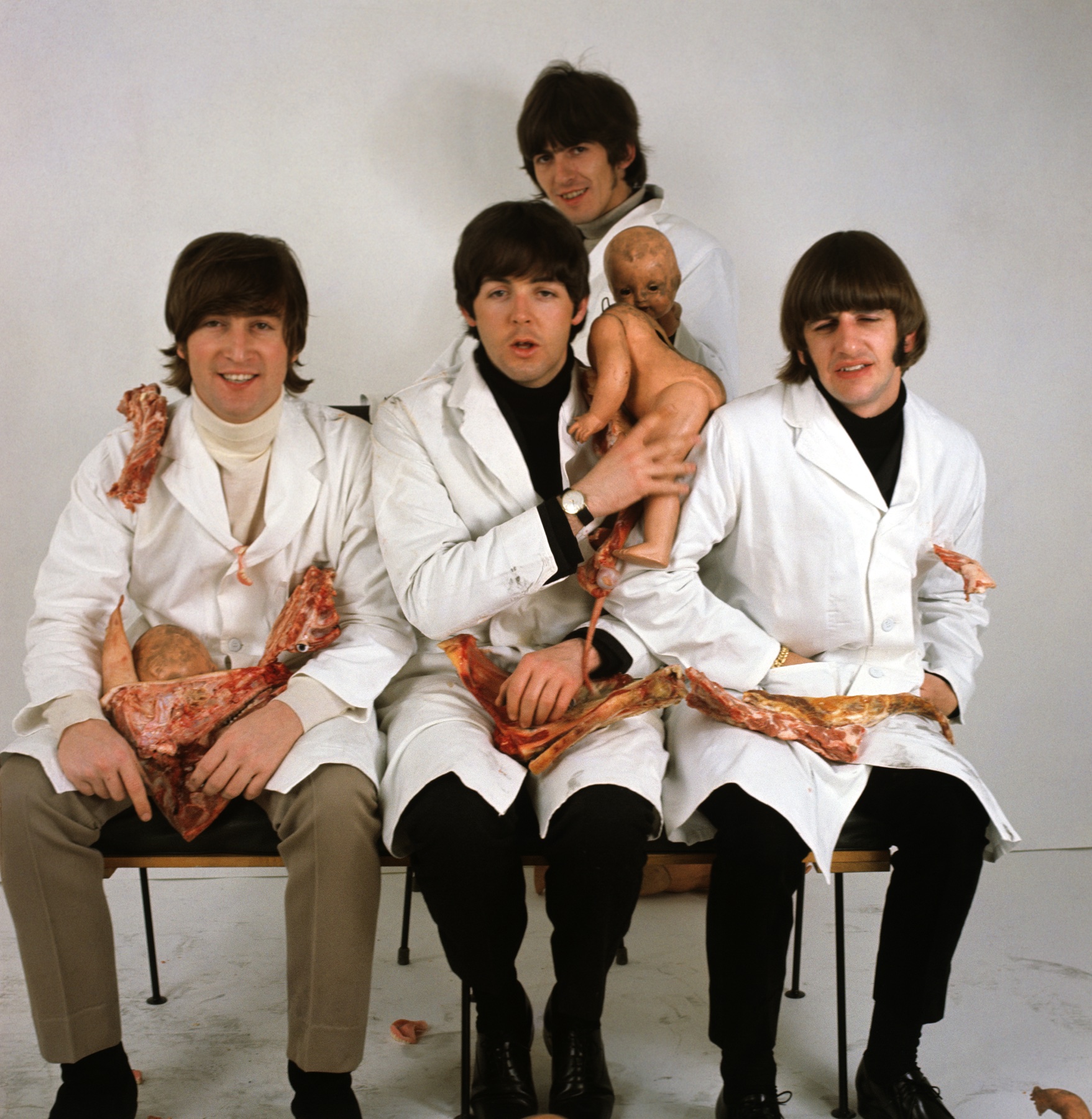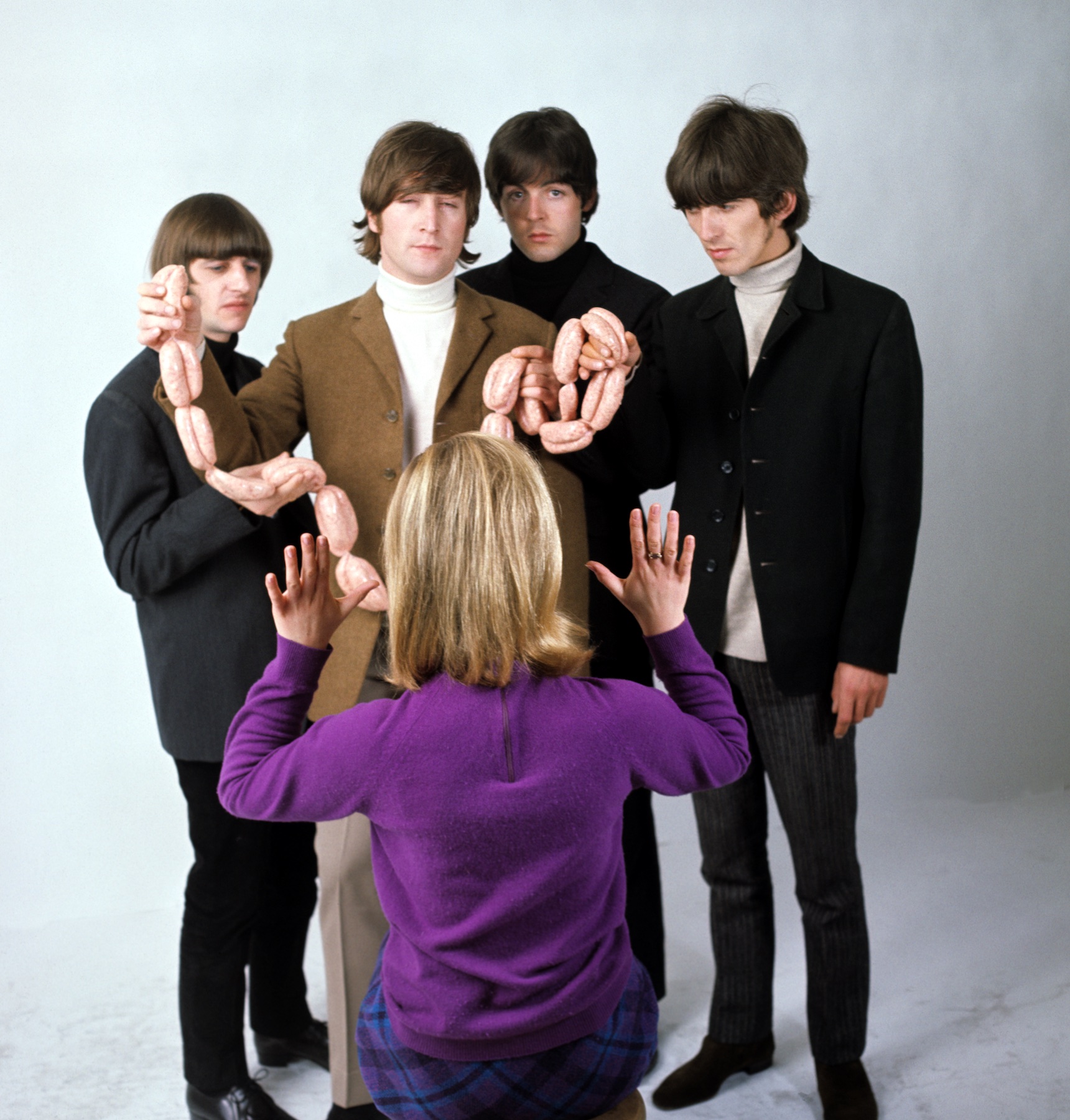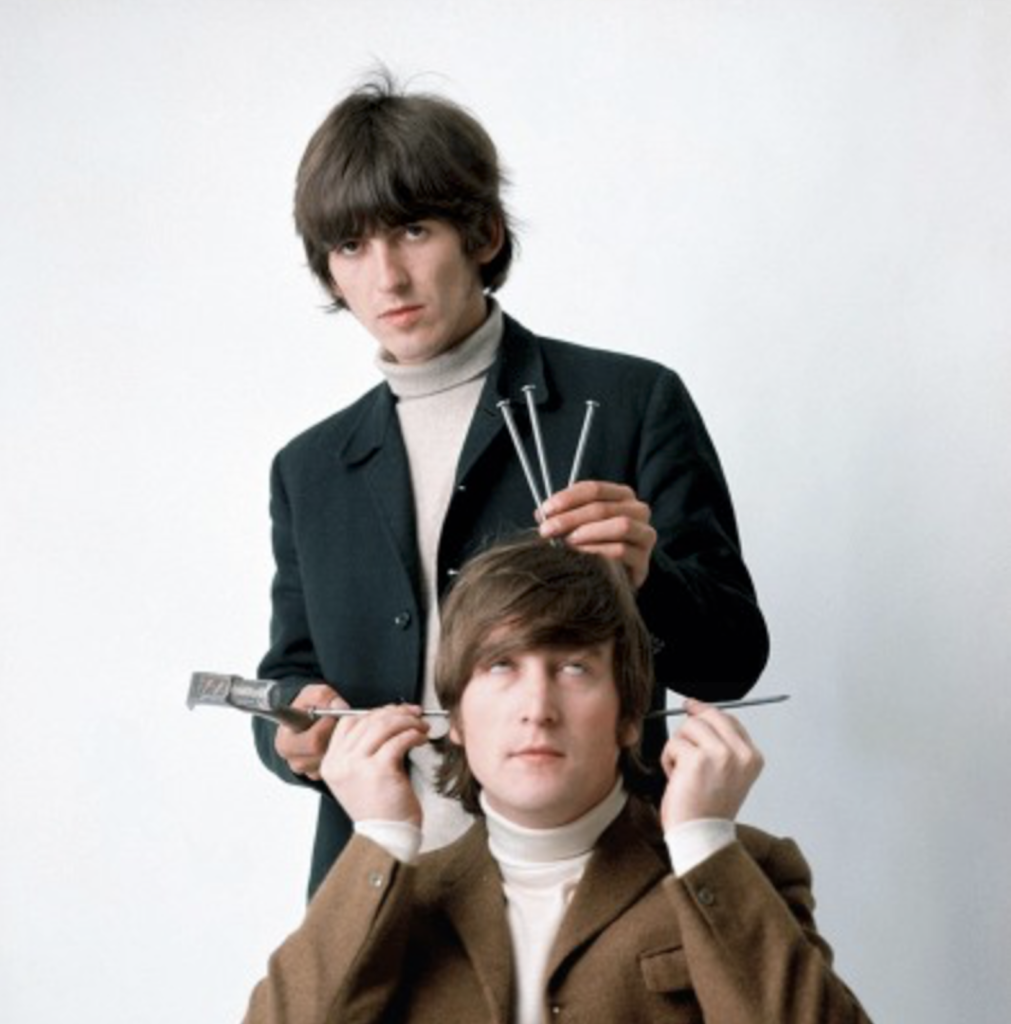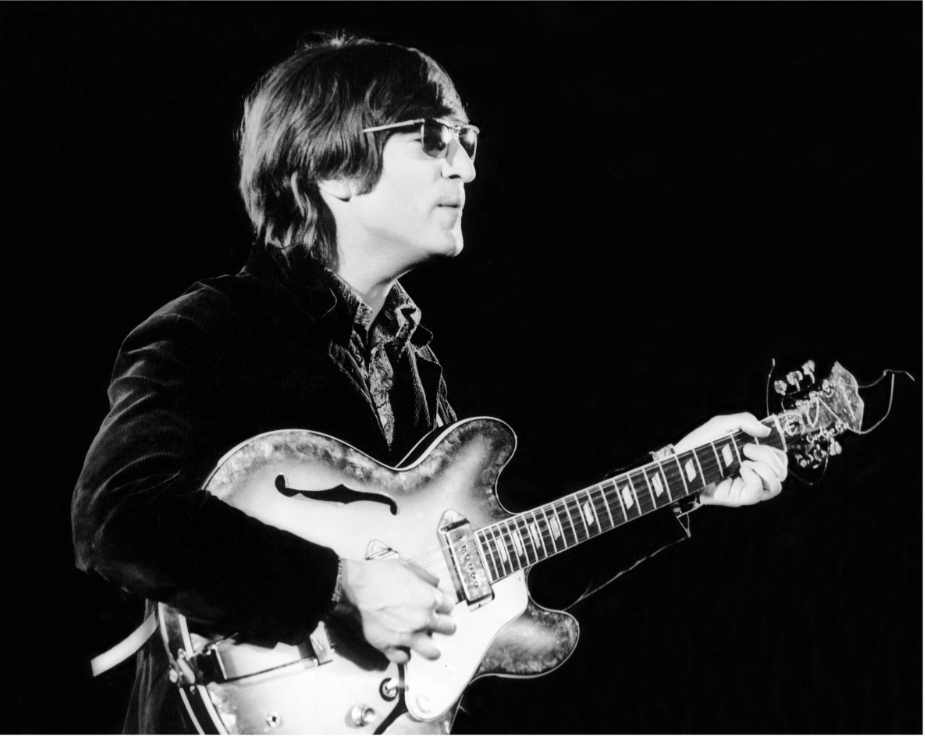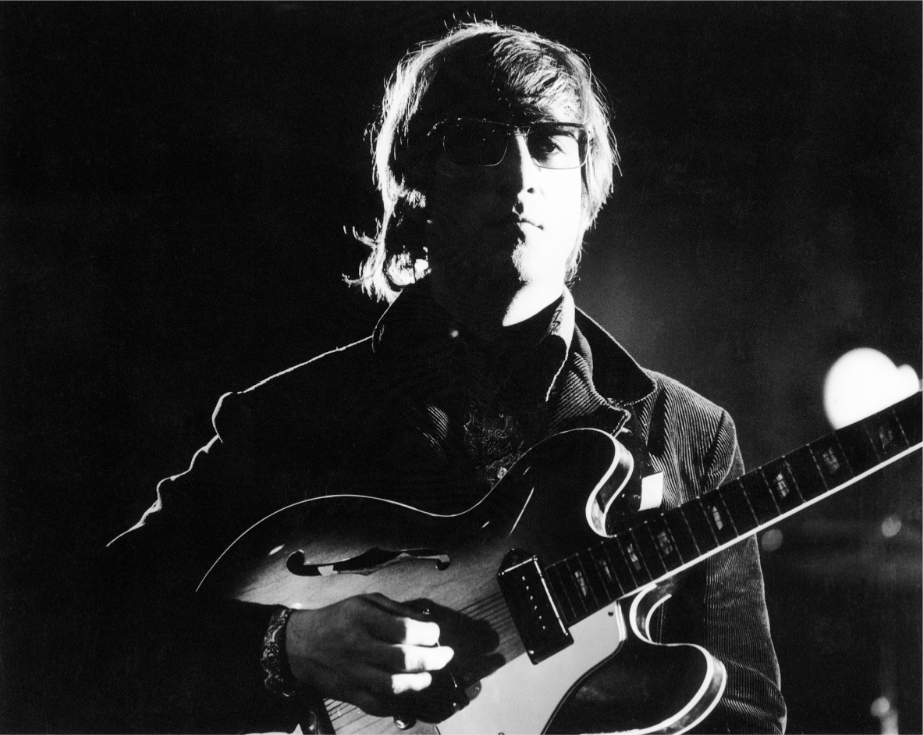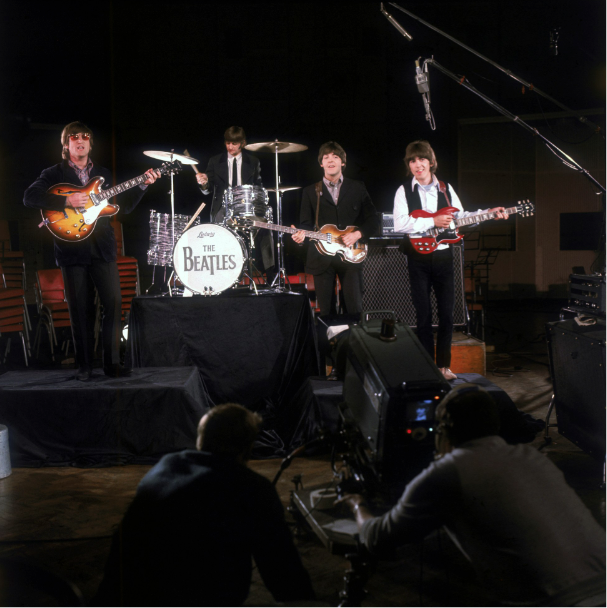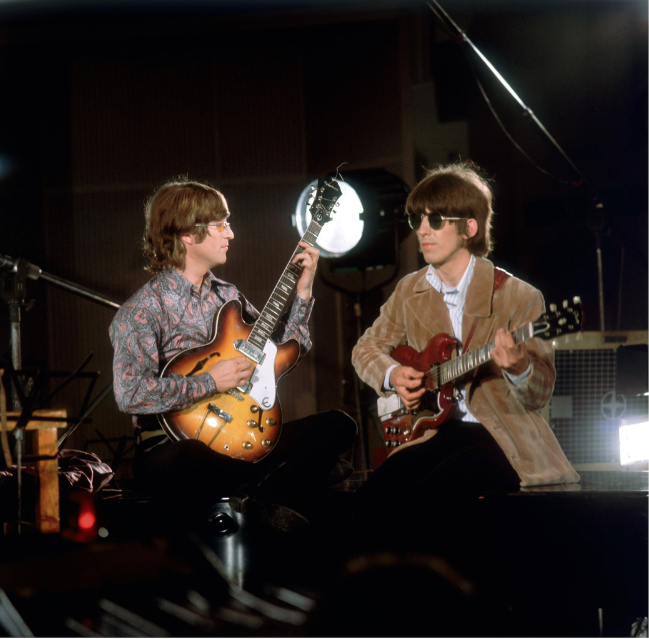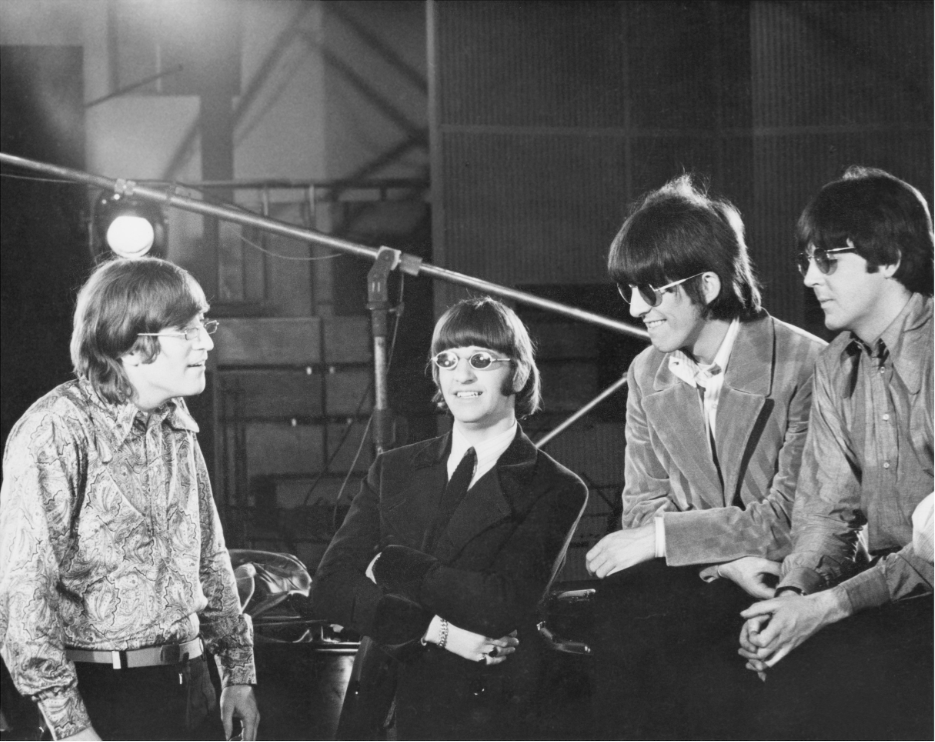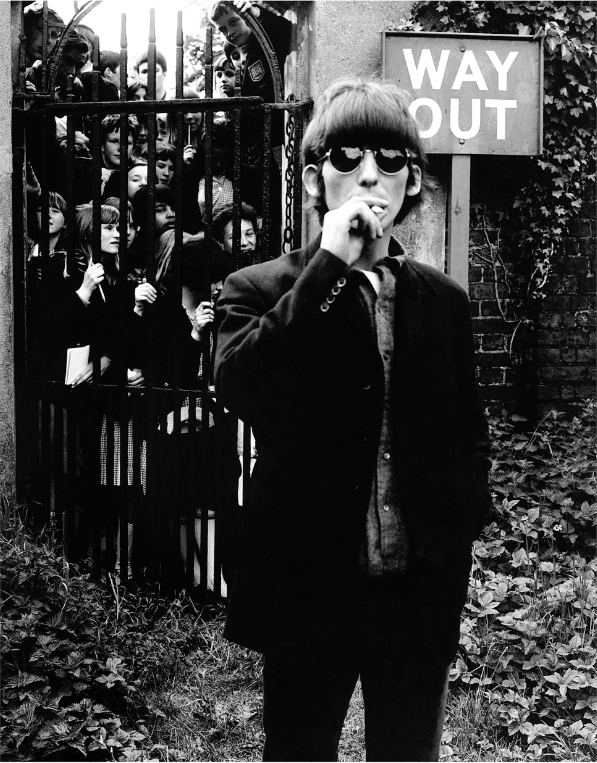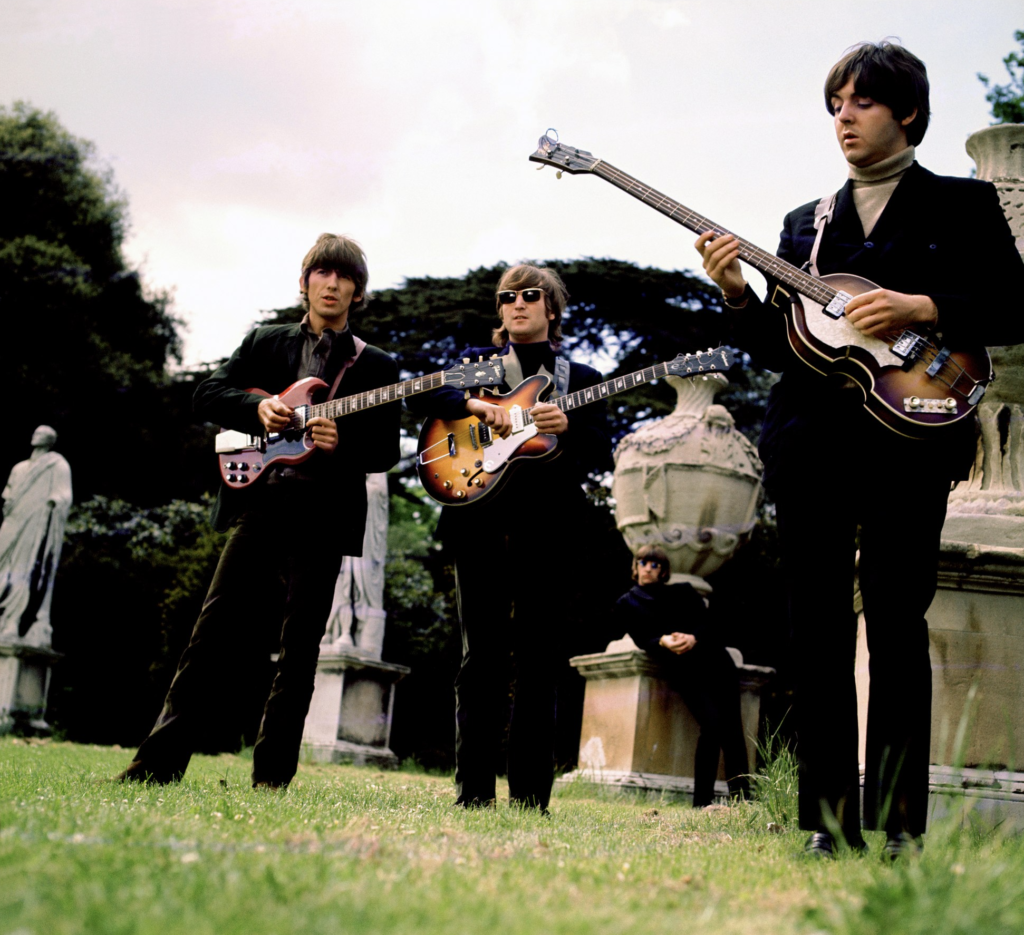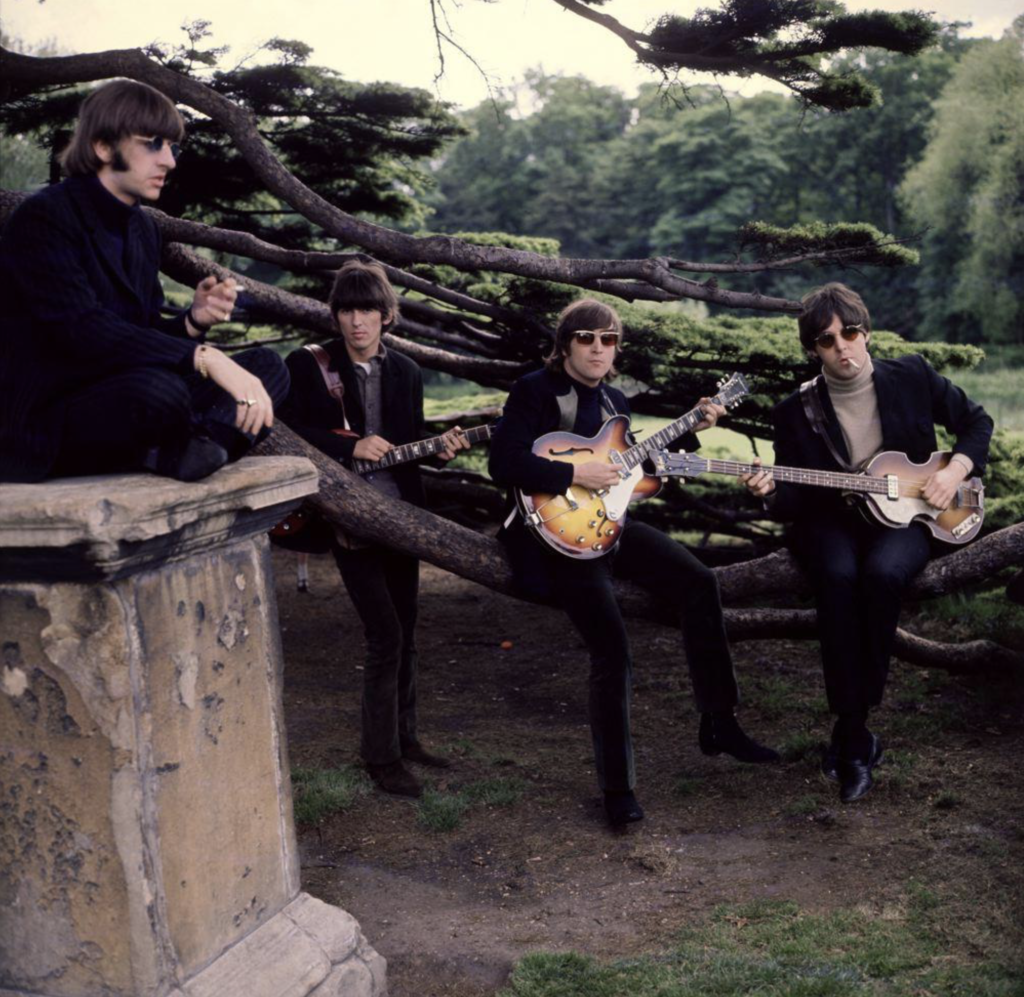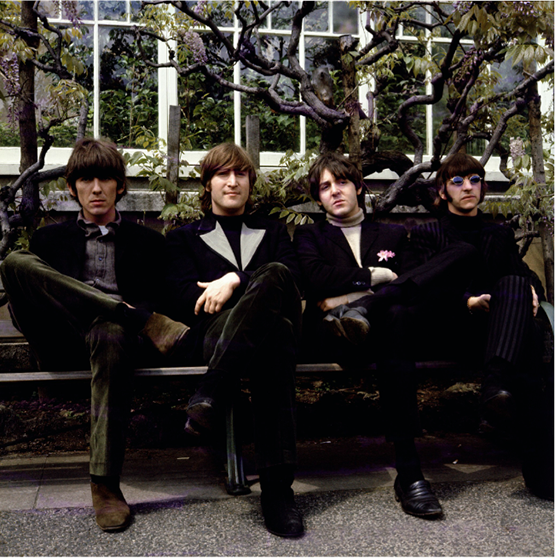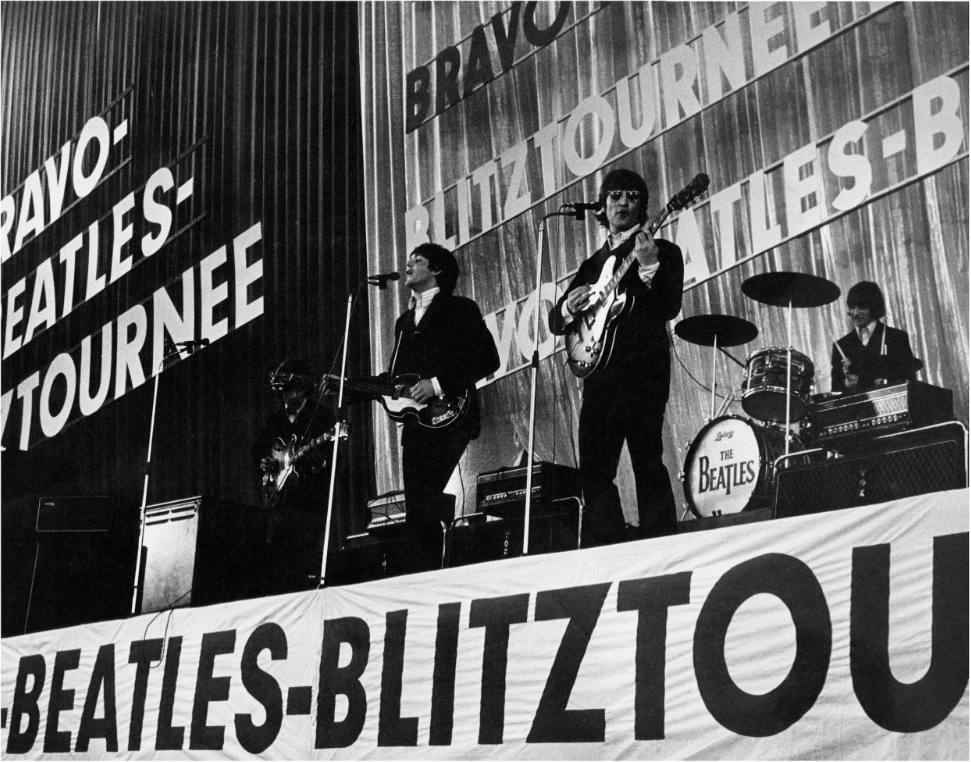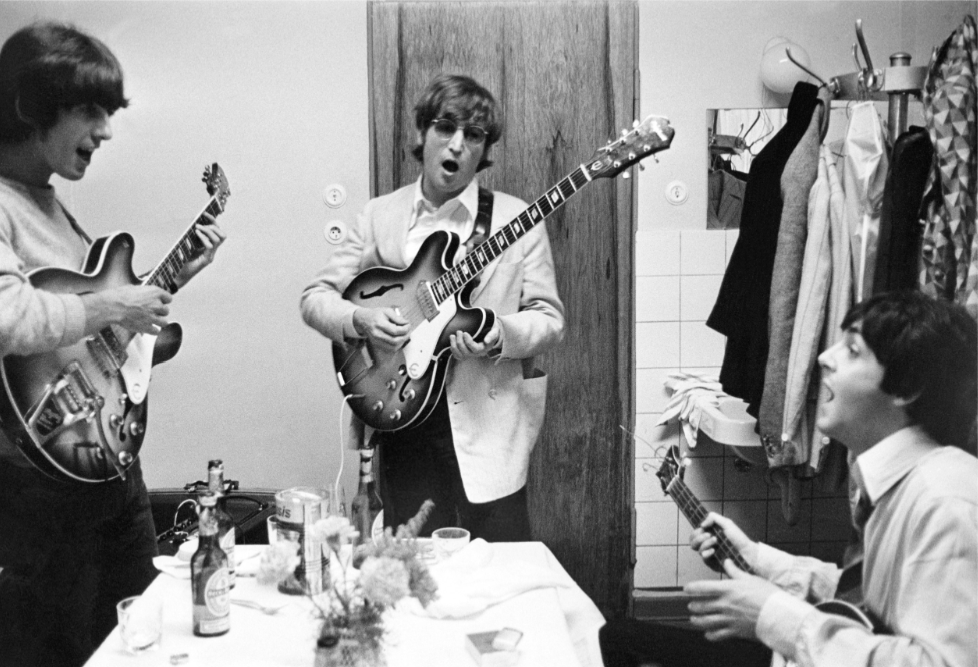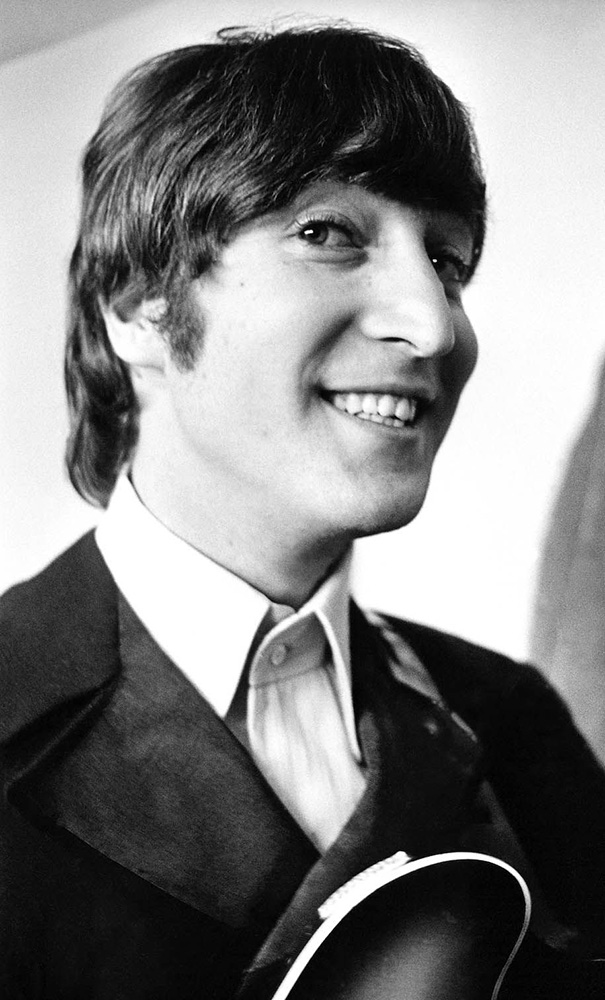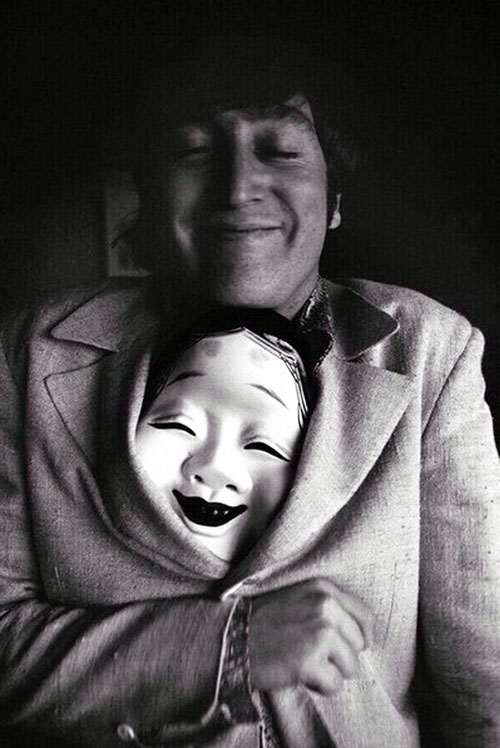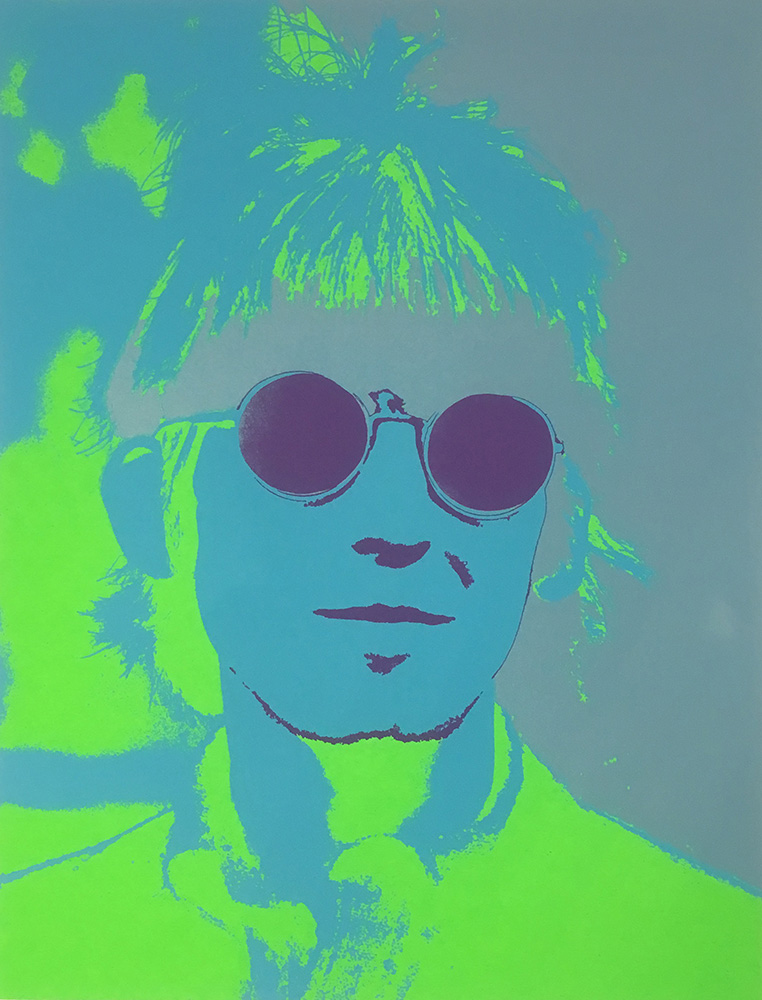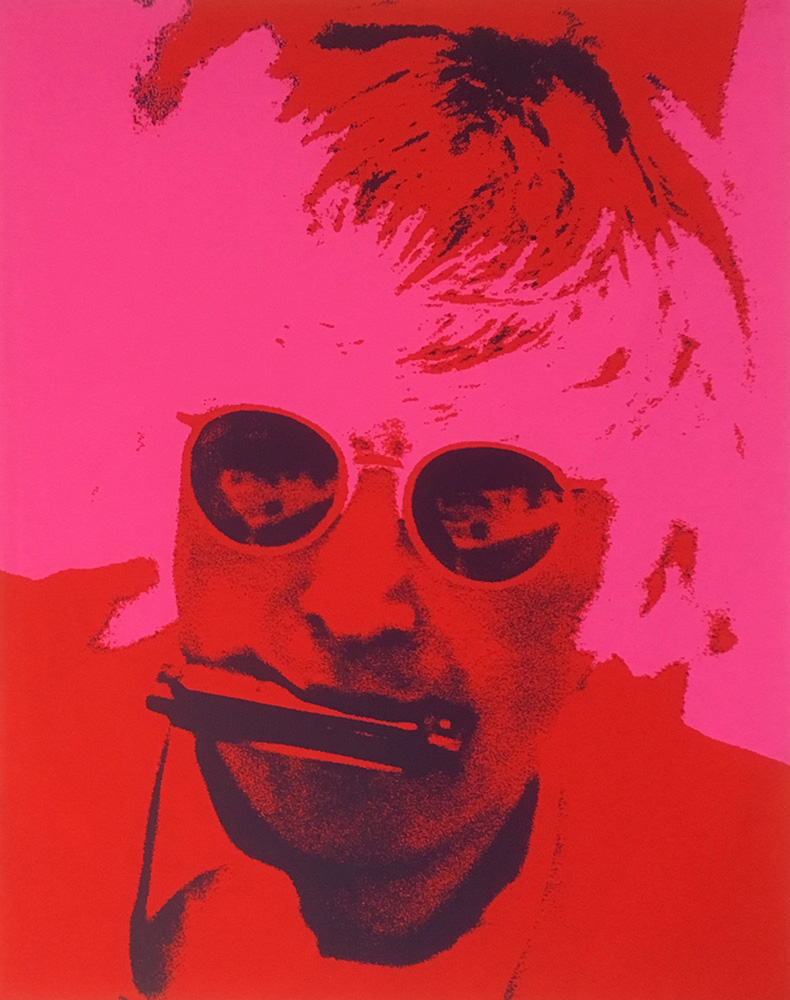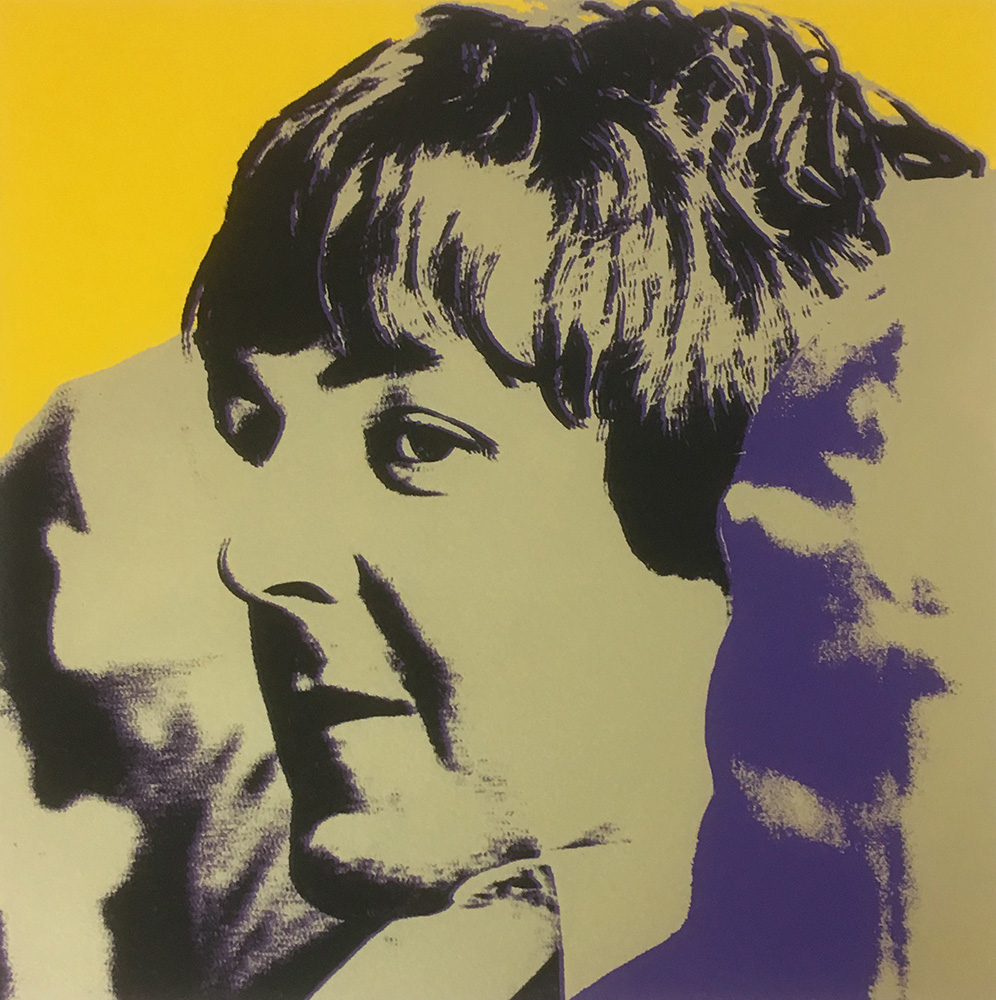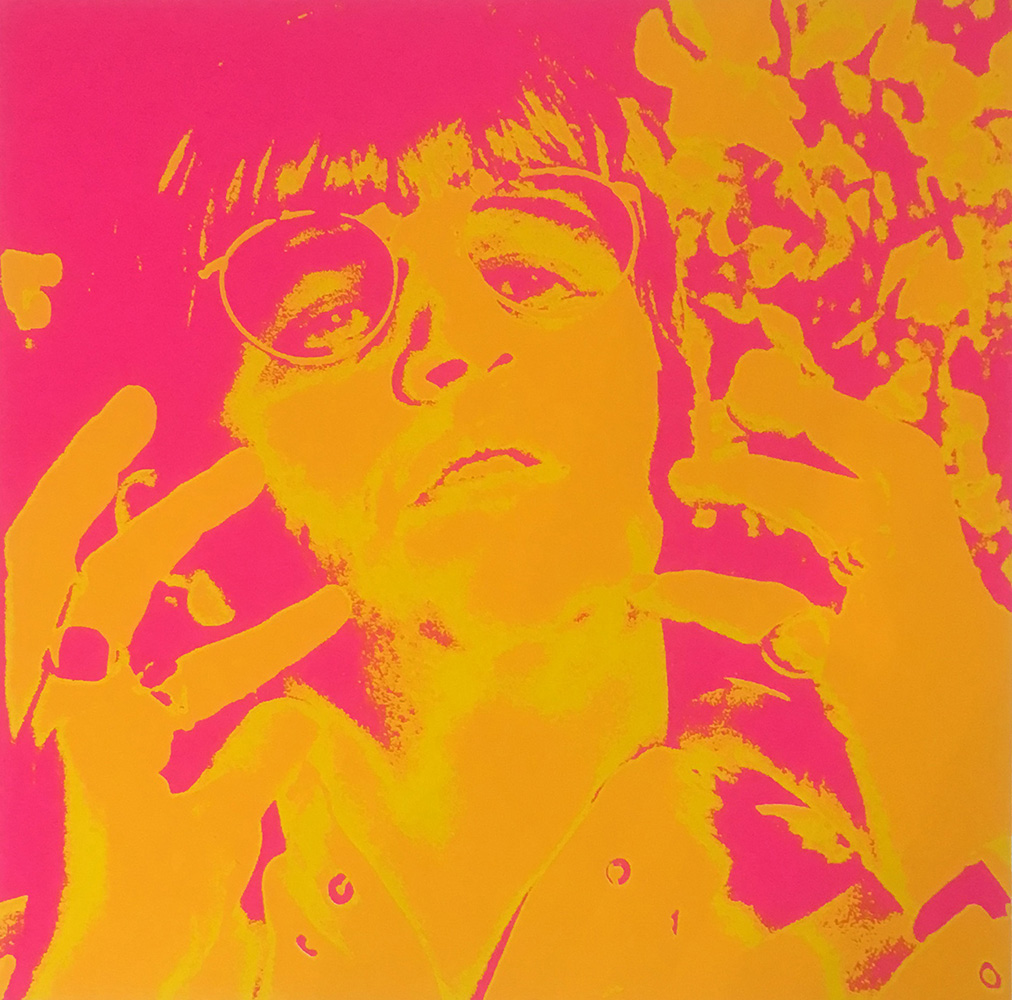Bob Whitaker photographed The Beatles over a key two-year period from 1964 to 1966.
Bob was first introduced to the Beatles in 1964 when he photographed Brian Epstein during the band’s first Australian tour. He was a 23-year-old photographer based in Melbourne when Brian, impressed by his work, soon invited him to London to photograph the Beatles and other bands he managed. Brian had recognised in Bob an artist with an individual approach that paralleled the Beatles’ own growing rejection of pop conventions, and whose work might reflect the group’s own changing ideas.
Bob spent two years traveling with the Beatles and shooting them at work, at rest and at play, on their tours, at home, in the recording studio, during private moments, and in formal photo-sessions. He was given a free hand to record events in a way that was very strong on atmosphere, and encouraged his surrealist approach – most strikingly in his infamous 1966 ‘Butcher’ session. As Bob wryly recalled, “It’s not surprising some of my photographs were sometimes considered unsuitable for reproduction in newspapers.”
Bob Whitaker passed away in 2011. His estate ensure his legacy lives on and offers collectors the opportunity to purchase estate authorised limited editions in a choice of size options. Some signed work is available.
The Beatles ’65 album
On 15 December 1964, Capitol Records released Beatles 65 in the USA. The cover features four 1964 studio portraits of the Beatles holding various umbrellas, coiled springs and brooms, all taken by Bob Whitaker. Our research suggests that this was Bob’s first studio session with the band, and his tendency to make use of unusual props would be a regular feature of his studio shoots. This reached its surreal zenith in March 1966 when he shot the band in white coats with dismembered dolls and raw meat – the ‘Butcher” session.
At Home With John And Cynthia
In May 1965 Bob visited John and Cynthia Lennon at their house in Weybridge. The photographs he made during the visit represent a remarkable turning point in the history of the group’s photographs and how they evolved over the next few years. Never before has anyone broken away so determinedly from the accepted mould of Beatle photography. The series completely turns around any notion of promoting the Beatles. It shows John and Cynthia collaborating in a project of Bob’s devising, and underlines the trust they were willing to place in his personal view of the Beatles phenomenon.
The composition of this photograph shown above of John, Cynthia and Julian was not influenced by Grant Wood’s American Gothic painting – Bob Whitaker was not aware of it at the time he made this photograph. The inspiration came from a photograph Bob had made of two friends back in Melbourne, in which he was trying to recreate the appearance of early Australian settler photographs of the mid nineteenth century.
“John and I never discussed the Beatles. He was interested in metaphysics and art, and in particular we talked about the act of creating a work of art.”
– Bob Whitaker
Filming HELP!
On 10 May 1965 the Beatles spent the first of two days at Cliveden House, in Maidenhead, shooting scenes for their second movie Help!
“They (The Beatles) were very good with having someone constantly there with a camera. They never made me feel I was in the way.”
– Bob Whitaker
The Beatles On Tour 1965
The Beatles’ concert at New York’s Shea stadium on August 15 1965 was watched by over 55,000 fans, which was, at that time, a world record attendance. Bob witnessed Beatlemania at its height. He later recalled, “The journey to Shea had to be organised like a military operation. We flew by helicopter from the top of the Pan Am building in Manhattan and transferred to an armoured Wells Fargo truck near the stadium. It had no windows, and the kids were hammering on the outside and rocking it; the noise was deafening, the screaming and screeching was really terrifying. At one stage we thought the truck was going to tip over and we were all going to get dragged out and torn to pieces.”
Christmas fan club recordings 1965
Bob had to develop his techniques for shooting in low-light situations, pushing film to its limit. These shots of The Beatles recording Christmas fan club messages presented an especially difficult task, being lit by only one 300 watt bulb way up in the ceiling. The results justify the technical struggle, retaining the mood as well as the immediacy of the occasion.
Help! promotional film 1965
Here are The Beatles sitting in linear formation on a wooden plank set on two trestles, under a simulated snow shower during the making of a promotional film for their single ‘Help!’ This promo film was made at Twickenham Film Studios on 23 November 1965 – some months after the original release of the single in July 1965. The promotional film was shot in black and white, but Bob Whitaker was there to photograph the scene in colour.
Other sessions 1965
For this studio session, which took place at West Hampstead Studios on Sherriff Road, Stuart Brisley and theatre designer Carol Russell created an elaborate set for Bob Whitaker using mirrors, silver foil, polythene sheets and blocks of polystyrene.
Here they are accompanied by a four-legged friend.
Undated studio session
At first we believed that the two photographs that follow were also taken at the same studio session as the Beatles ’65 images above. However further scrutiny suggests they were taken on a different date – the band are wearing different clothes, and it appears that their hair is a different length. This was a straightforward session, with no props evident. We are investigating further…
Rehearsals at the Donmar
Paul, George and John sing harmony at the Donmar Rehearsal Theatre, in late 1965, during preparations for their final UK tour.
Yesterday and Today – aka The Butcher session
On 25 March 1966 Bob Whitaker took his most infamous portraits of the Beatles – in a surreal session that featured the band dressed in white butchers coats, covered with dismembered dolls, pieces of meat, false eyes and teeth. He called this the ‘Somnambulent adventure’.
“The origin for what I call ‘Somnambulant Adventure’ was Moses coming down from Mount Sinai with the Ten Commandments. He comes across people worshipping a golden calf. All over the world I’d watched people worshiping–like idols, like gods–four Beatles. To me they were just stock standard normal people.” – Bob Whitaker
The original plan in Bob’s mind was for the ‘Butcher’ image to be the centre panel of a triptych. The left hand panel would feature a girl holding up sausages in front of the band while the right hand panel would feature a photograph of George about to drive nails into John’s head. Bob had no idea that Capitol were going to choose the butcher image for Yesterday and Today. It had originally been used for a promotional advert for ‘Paperback Writer’ before it was chosen for the US album. Adverse reaction in the US was pretty instant and Capitol needed to withdraw all 750,000 printed covers. A new cover, also shot by Bob, was hastily printed, and pasted over the original butcher sleeves. As John later pointed out, buyers soon discovered that you could steam off the replacement and get back to the original.
“People have read so much into this image, and most it is rubbish. For a start, it was entirely my idea. Do you really think they were going to tell me to go out and get dolls, and go to a butchers shop, and find false teeth and eyes? That really wasn’t their style. I had this idea that I wanted to fill the image with things that accentuated the reality of them as human beings, rather than idols. I picked up the dolls from a factory – this is how they came, in bits and pieces, I didn’t decapitate them – and just tipped them on the floor. Then I arranged all the different parts of the image, and took the pictures.” – Bob Whitaker
“Bob was into Dali and making surreal pictures…It was inspired by our boredom and resentment at having to do another photo session and another Beatles thing. We were sick to death of it…That combination produced that cover.”
-John Lennon
Paperback Writer and Rain promos
On 19 and 20 May 1966 Bob Whitaker was on set when The Beatles filmed their promotional videos for Paperback Writer and Rain, directed by Michael Lindsay-Hogg. He filmed the band at EMI studios and in Chiswick Park.
At the EMI studio shoot, Bob took the photograph of the group that would be used on the back cover of Revolver. Outtakes from that session show the Beatles examining Bob’s colour transparencies from the shoot for the cover of Yesterday and Today – the famous butcher session – which he had brought with him that day to show the band.
“Except in the studio I never asked the Beatles to pose for me.”
– Bob Whitaker
‘Way Out’ is one of Bob Whitaker’s best loved and most important Beatles photographs. It shows George Harrison during a cigarette break in the Chiswick Park filming. George wears his sunglasses and appears oblivious to the crowd gathered behind him, locked out of the park, but within spitting distance of him. It was the afternoon, and children from the local school were returning home – and realised what was going on in the park. A crowd soon gathered, hoping for a glimpse of their heroes. This dramatic photograph succeeds in epitomising, in a single image, the glamour, fame and magnetism of the Beatles. “Somehow one schoolgirl got through the security net. You can imagine how thrilled she was. It was quite touching – The Beatles were so friendly towards her and behaved like perfect gentlemen”, Bob recalls.
The Beatles On Tour 1966
“The schedules were punishing. You hardly knew which city you were in. What I mostly remember about touring is being constantly ushered onto planes along with the Beatles and their supporting cast.”
– Bob Whitaker
The Pop Art series
A few years before Bob Whitaker passed away – his estate believe in or around 2005 – he created this set of four vibrant and and dramatic screen prints – one for each Beatle. Just 25 sets were produced. Each print is made on on 27.5 x 39.5 inch paper, and numbered out of 25 under the image area in pencil. One print in each set has been signed by Bob Whitaker. They are offered for sale as a complete set of four.
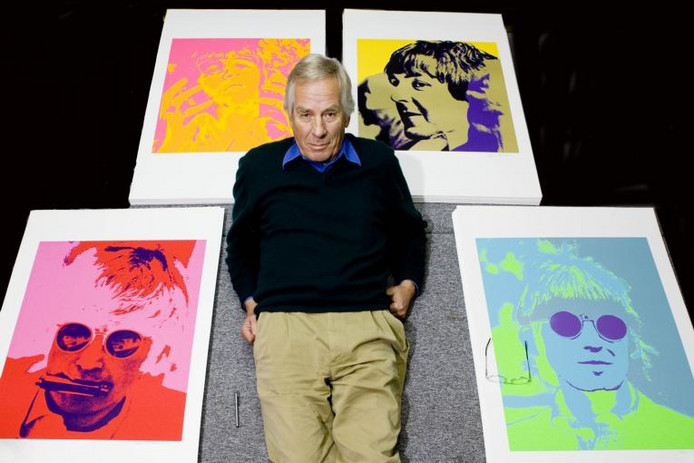
Biography
Bob Whitaker (1939-2011) was a British photographer well-known around the world for his innovative photographic style. Born in England to an English mother and Australian father, he often described himself as, “One part English, one part Aussie lad”. Nicknamed by Mick Jagger as “Super click”, he is best known for his numerous and often shockingly different photos of The Beatles from 1964 to 1966. His style was heavily influenced by his good friend Salvador Dali and this can be seen in the surreal images he took.
His straight-forward, no holds-barred approach to photography left many of his subjects at ease, and allowed him to get closer than others before. Following the Beatles final world tour Bob went back to London, to help create the notorious hippy magazine “Oz”, with Martin Sharp.
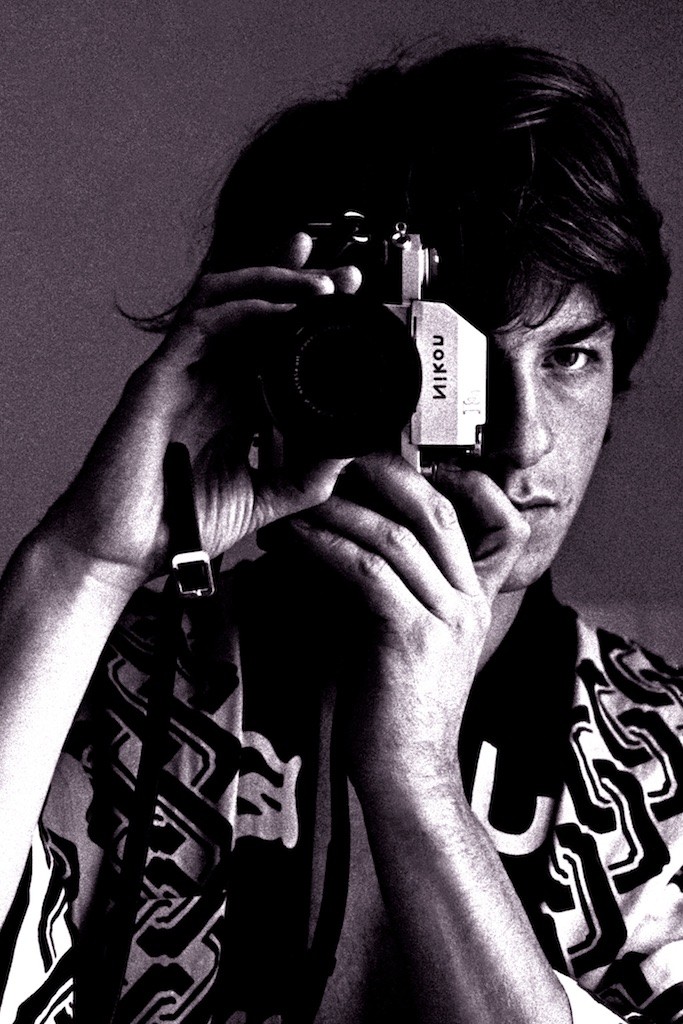
Bob Whitaker, Tokyo (1966)
After this he worked on a number of films, including Mick Jagger as Ned Kelly and Germaine Greer in “Darling do you love me?” Later, he went on to photograph the Vietnam and Indo-Pakistani wars. This showed Bob a more dangerous side of photography and after being injured led him to take a bit of a hiatus, and raise a family.
Bob passed away in 2011 after a long battle with illness. He leaves behind a unique and extraordinary collection of images. Bob’s estate offers collectors the chance to acquire limited edition estate stamped photographs from his archives.

